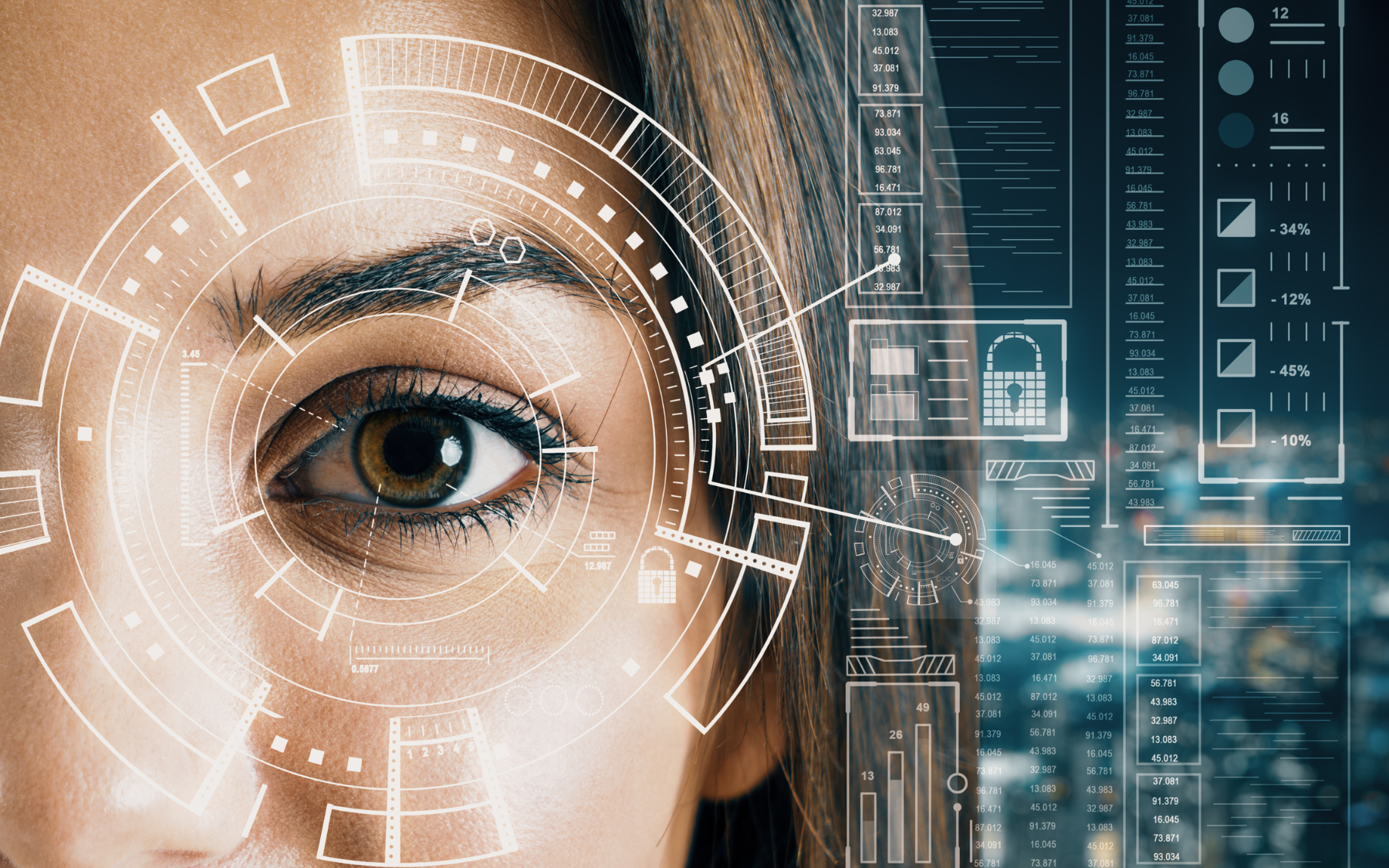Protecting Pharma Research from Cyber Espionage
October 2, 2025

Introduction
Cyber espionage is one of the most dangerous threats to the pharmaceutical sector today. The research that drives new medicines, vaccines, and treatments is a target for cyber criminals, rival organisations, and nation states. The risk is no longer theoretical. Attacks against pharma research have been reported across Europe, North America, and Asia. The value of this research is too great for attackers to ignore.
Pharma research is the result of years of work and billions in investment. A single drug patent can be worth billions. Clinical trial data represents years of effort. If stolen, this data can be sold, manipulated, or used to speed up rival development. The result is lost revenue, reputational harm, and risk to patient safety.
This blog is written for researchers, executives, security teams, and policymakers. It explains why pharma research is targeted, the most common attack methods, and the real-world cases that show the damage caused. It then sets out practical ways to protect research using proven frameworks and security practices.
The rise of cyber espionage against pharma is linked to global pressures. The COVID-19 pandemic highlighted the value of vaccine research. Several governments confirmed that their research facilities were attacked during 2020. These incidents brought global attention to the problem. Today, the threat continues. Protecting pharma research is no longer optional. It is essential.
Why Pharma Research is Targeted
Pharma research is unique in value and importance. Attackers see three clear reasons to target it.
The first reason is commercial value. Developing a drug can take ten years and cost over one billion pounds. Attackers who steal formulas, test data, or trial outcomes give competitors an unfair advantage. By bypassing years of development, rivals save vast sums of money and gain market share.
The second reason is political value. Nation states want to strengthen their own industries and weaken foreign competitors. Cyber espionage is a tool for industrial competition. By stealing vaccine research or treatment data, a state-backed attacker improves domestic healthcare and undermines foreign companies.
The third reason is criminal value. Cyber criminals know that stolen research sells for high prices. Intellectual property can be sold to competitors. Patient records can be traded on dark web markets. Attackers also use ransomware to hold research hostage until payments are made.
Pharma organisations are also vulnerable because of their structure. Research is spread across universities, clinical research organisations, hospitals, and regulators. This creates multiple points of entry. Attackers often target suppliers and smaller partners with weaker defences. Once inside, they move across networks until they reach core research systems.
The pandemic highlighted how high the stakes are. Vaccine research became a global target. In 2020, the UK National Cyber Security Centre reported that APT29, a group linked to Russian intelligence, targeted vaccine research facilities in the UK, US, and Canada. This proved that pharma research is now a priority for nation-state espionage.
Common Cyber Espionage Threats in Pharma
Pharma research is attacked in many ways. Each method poses unique risks.
Advanced Persistent Threats
Advanced Persistent Threats are long-term campaigns run by skilled groups. These groups are often linked to states. They enter a network and remain hidden for months or years. Their goal is to steal data without detection. APT29, also known as Cozy Bear, targeted vaccine research during the pandemic. They used malware, phishing, and stolen credentials to remain undetected while extracting data.
Phishing and Social Engineering
Phishing is one of the most common entry points. Attackers send emails that look legitimate. A researcher may receive an invitation to a fake conference or a request for trial data. By clicking a link, the researcher is taken to a fake login page. When they enter details, attackers gain access.
Social engineering extends beyond email. Attackers use phone calls, LinkedIn messages, or impersonation. They pose as collaborators or regulators to trick staff into sharing sensitive information.
Supply Chain Attacks
Pharma research depends on a wide supply chain. Clinical research organisations, cloud providers, and universities all share data. Attackers exploit weak links in the chain. A breach in a small partner can lead to access to the main pharma company. In 2021, reports confirmed that several pharma organisations were breached through their research suppliers.
Ransomware
Ransomware has become a major threat to pharma research. Attackers encrypt files and demand payment to restore access. In 2021, a European pharma company reported losing access to trial systems for weeks due to ransomware. Even when no data is stolen, operations are disrupted, trials delayed, and costs rise.
Insider Threats
Insiders are a hidden risk. Employees, contractors, or suppliers may leak or steal data. This can be intentional or accidental. A staff member using a weak password or storing files on a personal device increases exposure. Malicious insiders may sell data to competitors or criminals.
Real-World Examples of Cyber Espionage in Pharma
The past decade has seen several serious cases of cyber espionage in pharma.
In 2014, hackers targeted a major US pharmaceutical company. They stole research data on cancer treatments. The data was later sold to overseas competitors. The company lost billions in potential revenue and years of competitive advantage.
In 2020, the European Medicines Agency was hacked. Documents related to the Pfizer-BioNTech vaccine were stolen and leaked online. This caused confusion, raised concerns about vaccine safety, and damaged trust in regulatory processes.
In 2021, a ransomware attack disrupted a European drug maker. Researchers lost access to trial data and critical systems. The delays impacted timelines for regulatory approval. The financial losses ran into millions.
In 2020, the UK, US, and Canada reported that state-backed attackers targeted vaccine research facilities. This was one of the most public confirmations that pharma research had become a target of international espionage.
These cases show that the threat is not hypothetical. Pharma organisations have already been hit and continue to be targeted.
Business and Research Impact of Cyber Espionage
The impact of cyber espionage on pharma is severe. It goes beyond immediate costs.
Intellectual property loss is the most obvious risk. Years of research and billions in investment are lost when attackers steal data. Competitors gain access to work that took years to develop. The victim loses revenue and competitive advantage.
Financial damage is significant. IBM reported that in 2023, the average cost of a data breach in healthcare was over £8 million. For pharma research, costs can be even higher. Lost patents, regulatory delays, and lawsuits add to the total.
Operational disruption is another impact. A ransomware attack may halt trials for weeks. This delays approval, production, and revenue. Patients waiting for new treatments are also affected.
Reputation is harder to repair. Once a breach is reported, trust declines. Investors hesitate, regulators question compliance, and patients lose confidence. Even years later, the reputation of a breached company remains linked to the incident.
There is also a public health risk. If attackers manipulate or leak false research data, it can mislead regulators and patients. Trust in medicine is fragile. Cyber espionage puts that trust at risk.
How to Protect Pharma Research
Secure Access Controls
Limit access to research systems. Use strong identity management. Require multi-factor authentication for all accounts. Enforce strict password policies. Regularly review who has access and remove unused accounts.
Network Segmentation
Separate research networks from general corporate systems. This prevents attackers from moving freely once inside. Critical research data should be isolated in secure environments.
Data Encryption
Encrypt research data both when stored and when transmitted. Encrypted data is useless without the decryption key. This adds a layer of protection if data is stolen.
Endpoint Security
Protect devices used by researchers. Laptops, desktops, and lab equipment must run security software. Apply patches and updates quickly to close vulnerabilities.
Threat Detection and Monitoring
Use monitoring tools to detect unusual activity. Security Information and Event Management systems analyse logs in real time. Threat intelligence services provide alerts about known attackers.
Staff Awareness
Train staff to recognise phishing emails and suspicious requests. Awareness training must be continuous. Researchers should know how to report incidents quickly.
Supply Chain Security
Audit suppliers and partners. Ensure they meet your security standards. Include security requirements in contracts. Monitor third-party access to your systems.
Ransomware Preparedness
Back up research data regularly. Store backups securely and offline. Test recovery processes to ensure they work. Do not rely on paying a ransom to restore data.
Cybersecurity Frameworks for Pharma
Frameworks Provide Structure for Defence
Cybersecurity frameworks play a critical role in helping pharmaceutical organisations establish, measure, and continuously improve their defensive posture. Instead of relying on ad hoc controls, frameworks provide structured methodologies, tested principles, and internationally recognised benchmarks. For industries like pharma, where intellectual property, sensitive health data, and regulatory compliance are at stake, adopting such frameworks is not optional but essential.
The NIST Cybersecurity Framework (CSF) is one of the most widely recognised models. It is built around five core functions: identify, protect, detect, respond, and recover.
For pharmaceutical companies, these functions align closely with the unique challenges of protecting research pipelines, laboratory systems, and patient data. For example, the identity function encourages organisations to catalogue all assets, including lab equipment connected to the network, cloud storage platforms, and third-party partners, so that risks are properly assessed. The protect function ensures controls such as access restrictions and encryption are in place, safeguarding valuable intellectual property. Detect focuses on monitoring systems for anomalies, which is vital when adversaries may dwell in networks for months. Respond provides structured processes for containment and mitigation, while recover ensures continuity of operations, particularly important when a cyberattack could disrupt clinical trials or manufacturing.
By implementing the NIST CSF, pharma companies gain a comprehensive, lifecycle-based approach to resilience.
In the United Kingdom, the Cyber Essentials scheme provides a more entry-level but highly practical baseline. Its focus on five fundamental areas, firewalls, secure configuration, access control, malware protection, and patch management, aligns well with the operational realities of pharmaceutical research environments. For example, patch management is especially critical in laboratory settings, where legacy equipment and specialised software are often in use.
Ensuring these systems are kept up to date, or at least shielded from external access, reduces the likelihood of compromise. Access control is equally important when multiple researchers, contractors, and external collaborators are handling sensitive data. Cyber Essentials can serve as a first step, ensuring foundational security hygiene is in place before more advanced frameworks are adopted.
Another globally recognised standard is ISO/IEC 27001, which focuses on information security management systems (ISMS). Unlike NIST or Cyber Essentials, ISO 27001 emphasises governance, policies, and continuous improvement. It requires organisations to systematically assess risks, apply appropriate security controls, and demonstrate ongoing compliance through audits. For pharmaceutical companies, this framework is especially valuable when engaging in global partnerships, as ISO 27001 certification is often seen as proof of robust data protection practices. It helps build trust with regulators, investors, and research collaborators across jurisdictions. By embedding information security management into everyday processes, pharma companies can demonstrate accountability and create a culture of security awareness throughout the organisation.
Aligning with these frameworks is not merely a compliance exercise. They provide guidance, structure, and measurable benchmarks for ongoing improvement. For instance, a pharma company may begin with Cyber Essentials to secure its foundational controls, progress to adopting the NIST CSF for a holistic operational strategy, and eventually pursue ISO 27001 certification to demonstrate maturity to global partners. This layered approach allows organisations to scale their defences in line with evolving threats and business needs.
Moreover, frameworks encourage consistency across distributed operations. With research often spread across international sites, third-party labs, and cloud providers, a unified framework ensures everyone is working to the same standards. This reduces gaps in security posture and makes it easier to coordinate during incidents. Frameworks also help align cybersecurity with broader business goals, ensuring investments in technology, staff training, and incident response are tied to measurable outcomes.
For the pharmaceutical sector, which faces some of the most sophisticated and persistent espionage threats, frameworks are not theoretical tools—they are blueprints for survival. By using them effectively, pharma companies can transition from a reactive security mindset to a proactive, risk-managed approach that safeguards innovation, protects patients, and maintains global trust.
What Cybergen Recommends
Cybergen works with pharma organisations to reduce cyber risk. We recommend starting with a full security assessment. This identifies weaknesses before attackers exploit them.
We then design a layered defence strategy. This includes network security, endpoint protection, staff training, and monitoring. Layered defence means that even if one control fails, others still protect the research.
Regular testing is important. Penetration testing identifies gaps and helps measure improvement. Threat intelligence services keep you informed about groups targeting the pharma sector.
Cybergen also supports supply chain security. We help you assess your suppliers and ensure they meet required standards. This closes one of the most common attack routes.
Pharma research is long-term. Security must be long-term too. Cybergen provides continuous monitoring, compliance support, and recovery planning. Protecting research is not a one-off project. It requires ongoing investment.
Future Trends in Cyber Espionage Against Pharma
Cyber espionage will continue to target pharmaceutical research in increasingly sophisticated ways. Several emerging trends make the threat more urgent and demand heightened vigilance across the industry.
First, the value of biotech and personalised medicine is growing rapidly. Research into genetic therapies, customised treatments, and next-generation vaccines is a goldmine for attackers. Intellectual property theft in this space could give rival states or competing firms a significant economic edge. Attackers will target genetic sequencing data, molecular structures, treatment formulas, and even patient-specific treatment algorithms. Clinical trial data, which represent years of costly research, are particularly at risk, as a breach can undermine competitive advantage or erode trust in a company’s integrity. Nation-state actors are especially likely to focus on this area, as access to such breakthroughs can accelerate their own biomedical programs without years of investment.
Second, the expansion of remote and hybrid work has dramatically increased attack surfaces. Researchers, engineers, and clinicians are no longer operating exclusively within secured corporate networks. Instead, many use personal laptops, home Wi-Fi networks, and cloud-based collaboration tools to access highly sensitive material. Personal devices often lack enterprise-grade security controls, making them easier for adversaries to compromise. Attackers may use techniques such as spear-phishing, credential theft, and malware implants to gain an initial foothold. Once inside, they can move laterally across networks to reach core research databases or intellectual property repositories. The blending of personal and professional environments creates grey areas of accountability that are difficult for security teams to monitor consistently.
Third, artificial intelligence is changing the dynamics of cyberattacks. AI-driven tools can automate phishing campaigns, craft highly convincing fake messages, and adapt in real time to evade detection. Machine learning models are being trained to scan for weak points in digital infrastructure, from outdated software to poorly configured cloud environments. Advanced AI can also help attackers bypass intrusion detection systems or mimic legitimate traffic patterns, making them harder to trace. At the same time, attackers may use AI to sift through stolen datasets more quickly, extracting valuable insights from terabytes of clinical data in ways that were not possible before. This gives them not only access to raw information but also actionable intelligence that can be monetised or weaponised more efficiently.
Fourth, regulatory pressure on pharmaceutical companies is intensifying. Governments and regulators are demanding stronger data protection standards, with penalties for non-compliance escalating. The European Union’s GDPR framework has already led to fines in the hundreds of millions of euros for data breaches. In the United States, similar frameworks such as HIPAA and evolving cybersecurity regulations are raising the stakes. Non-compliance or repeated breaches could result not only in financial losses but also reputational damage and loss of investor confidence. As digital supply chains grow more interconnected, regulators may also hold companies accountable for the security of their third-party vendors, research partners, and cloud service providers.
Looking ahead, several additional trends are likely to shape the threat landscape. Supply chain vulnerabilities will continue to be exploited, as pharmaceutical companies often rely on smaller biotech firms, contract research organisations, and global manufacturing partners. Many of these partners have weaker cybersecurity controls, making them attractive entry points for attackers. Furthermore, the increasing integration of Internet of Things (IoT) devices in labs and clinical environments creates new risks, as poorly secured equipment can serve as backdoors into otherwise hardened systems.
Pharma companies must prepare proactively for these evolving threats. Security strategies can no longer rely solely on perimeter defences; they must adopt a zero-trust model, continuous monitoring, and layered protection. Investment in resilience, rapid incident response, and threat intelligence sharing will become essential. Collaboration with governments, regulators, and industry peers can also strengthen collective defence, as no single company can withstand nation-state espionage campaigns alone. Training employees to recognise social engineering, implementing multifactor authentication, and securing remote work infrastructures will be critical first steps.
Ultimately, the pharmaceutical industry faces a paradox: the more valuable its innovations become, the more attractive it is to attackers. As research pushes the boundaries of personalised medicine and biotechnology, cybersecurity must evolve just as quickly to safeguard intellectual property, protect patients, and preserve public trust.
Future Trends in Hotel Cybersecurity
Threats will continue to evolve. Attackers are already using AI to create more convincing phishing emails. Ransomware groups are becoming more organised and professional.
Internet of Things devices in hotels present new risks. Smart locks, thermostats, and connected appliances are often weakly protected. Attackers can use them as entry points.
Regulators are increasing scrutiny. Fines will grow larger for non-compliance. Guests will demand transparency about how their data is protected.
Hotels that invest in cybersecurity now will be better prepared for these trends. Cybersecurity is becoming a key factor in guest trust and loyalty.
Summary
Pharma research is a target for cyber espionage. The risks are proven by real-world cases and supported by global evidence. Attackers include state-backed groups, criminals, and insiders. The impact of espionage is financial loss, reputational harm, and threats to public health.
Protecting research requires action. Strong access controls, encryption, monitoring, staff training, and supply chain security are essential. Frameworks such as NIST, Cyber Essentials, and ISO 27001 provide structure.
Cybergen recommends layered defence, continuous monitoring, and regular testing. Protecting research is not optional. It is the foundation of trust in your organisation.
References
European Medicines Agency (2020) Cyberattack on EMA, EMA, 11 December.
IBM (2023) Cost of a Data Breach Report 2023. Available at: https://www.ibm.com
UK National Cyber Security Centre (2020) APT29 targets COVID-19 vaccine development, NCSC, 16 July.
Ready to strengthen your security posture? Contact us today for more information on protecting your business.
Let's get protecting your business
Thank you for contacting us.
We will get back to you as soon as possible.
By submitting this form, you acknowledge that the information you provide will be processed in accordance with our Privacy Policy.
Please try again later.
Cybergen News
Sign up to get industry insights, trends, and more in your inbox.
Contact Us
Thank you for subscribing. It's great to have you in our community.
Please try again later.
SHARE THIS









